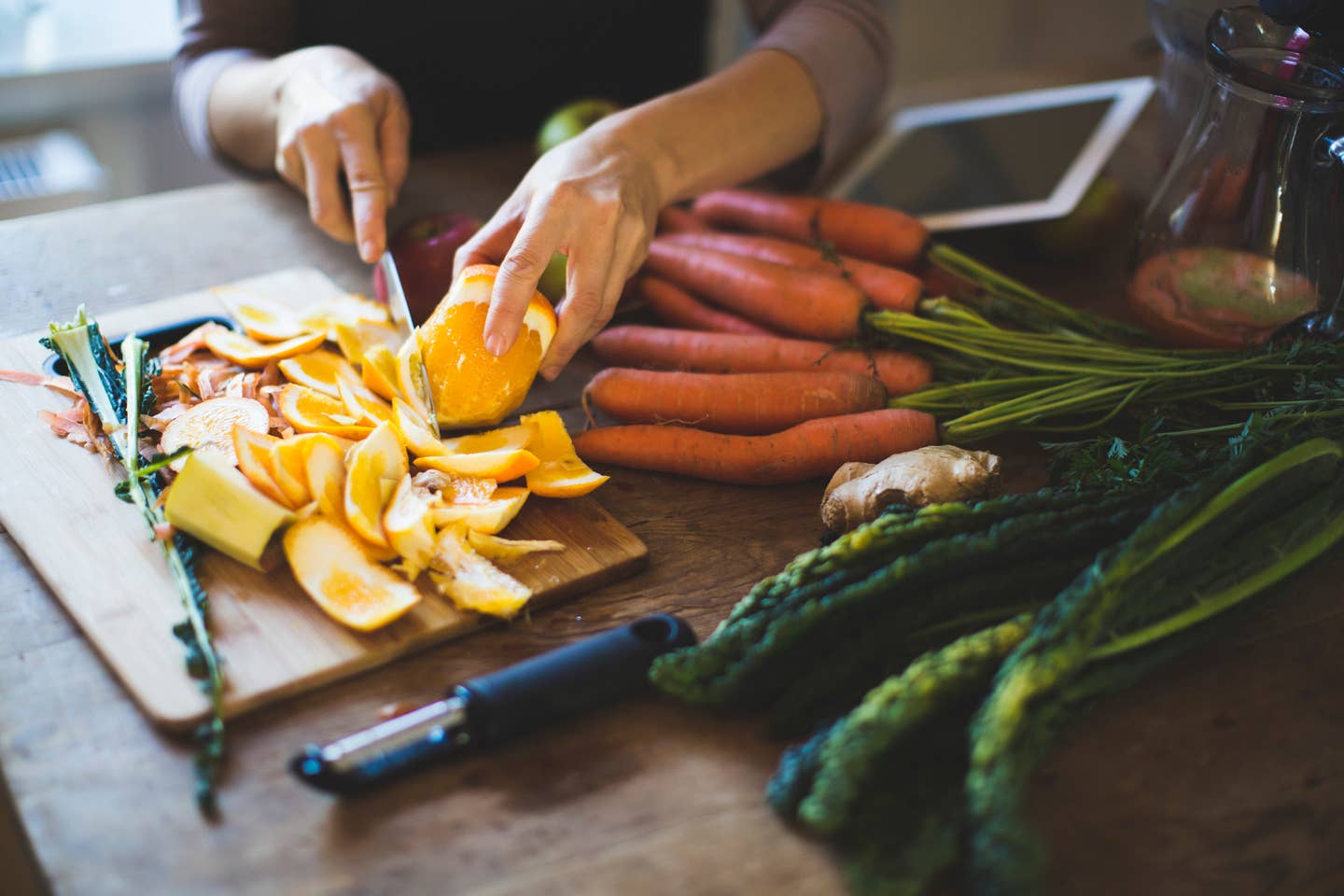
The Appeal of Peels: Why You Should Avoid Shaving Your Fruits and Vegetables
Do you find yourself staring at drool-worthy food pictures on your Instagram feed? That may explain why you’re unnecessarily peeling your fruits and veggies. We are inundated with polished photos and videos of highly styled food that’s been shaved and shorn before they're cooked. Maybe you grew up eating family dinners that included salad with naked carrot curls and mashed peeled potatoes. If so, it’s time to shake up your plant-based regimen with one simple change for the better.
Here’s the thing: Peels are packed with valuable nutrition. When you peel, you toss out so much of what naturally benefits your body—only to add them back in when you feel the need to take expensive supplements.
The Appeal of Peels: Antioxidants and Fiber
In addition to reducing prep time by removing one step from your cooking process, the peels of many fruits and vegetables provide abundant antioxidants, fiber, vitamins, and minerals. Medical studies prove that eating a diet high in fruits and vegetables (packed with antioxidants, vitamins, and minerals) is associated with lowering the risk of almost all chronic diseases.
Your unpeeled plant-based diet also provides a rich source of insoluble fiber, which helps you feel full longer, digest better and regulates blood sugar, so that you avoid the "spikes" that mobilize insulin and tell the body to store excess calories as fat. So eating the peels can help you maintain healthy body weight as well as deliver health benefits Some peels, like apple, provide soluble fiber to help reduce cholesterol and lower your blood sugar.
Which peels in particular
I learned to cook plant-based from Annemarie Colbin at her Natural Gourmet Cookery School, and she taught me not to peel. Her philosophy of whole foods dates back to her childhood in Argentina where food is eaten in it's most fresh form for the fullest impact of health and taste.
While there are some foods that definitely do need to be peeled, such as coconuts or pineapples, for obvious reasons, here are some that don't require it, and provide nutritional benefits when you keep them dressed.
• Apple
• Apricot
• Asparagus
• Berries
• Broccoli stalks
• Carrots
• Citrus fruits (grated or cooked)
• Cherries
• Cucumber (remove any wax first)
• Eggplant
• Grape
• Kiwi
• Mushroom
• Parsnip
• Peach
• Pear
• Pea
• Pepper
• Plum
• Potato
• Squash (cooked)
• Turnip
• Zucchini
In addition, ginger is hard to peel for a reason: You don’t have to. I discovered that when I cook ginger for the Indian lentil dish, dal, the skin just seems to disappear. When you roast or cook butternut squash for soup, the skin also disappears in the cooking process.
You will probably discover other whole foods that you don’t need to peel. I say: Follow your instincts and experiment. Just smashing a clove of garlic for a stock you’ll later strain is enough to release its flavor. You can also leave the tomato skin on when you’re making a sauce. You can later strain it with a food mill if you want to. Same goes for apple sauce.
Prepping the Peels for Eating
Carefully wash your bounty to remove surface dirt or pesticides. If you’re buying organic--which I hope you do-- you are getting fewer pesticides. Still, your box of CSA root vegetables or potatoes can probably do with a good wash. Use a vegetable brush to remove any soil and grit. Unpeeled delights made great homemade beet chips, potato chips, and sweet potato fries. In addition to fiber, potato skins provide more essential minerals --like potassium, iron, and niacin-- than the starchy insdie. Iron supports your body's red blood cell function, delivering energy to your muscles, so eat the peels to have more energy all day long. Meanwhile, your body needs potassium and niacin (vitamin B-3) to help convert nutrients into useable fuel. So peels are truly super-foods.
Unpeeled Potato Leek Soup
Prep time: 20 mins
Cook: 40 mins
Serves 4-6
Ingredients
- 3 large leeks
- 1tbsp olive oil
- 2 lbs Yukon Gold or Russet Potatoes
- Quart of Vegetable Stock
- Salt and pepper to taste
- Bay Leaf
- Pinch of marjoram
- Pinch of Thyme
- Parsley, Dill, Celery Leaves to Garnish
Instructions
- Cut away the tough green tops and roots from the leeks. Scrub and rinse leeks under running water (look between the layers of the white stalks, that’s where soil loves to hide). Slice leeks crosswise.
- Heat olive oil and sauté leeks until translucent. While leeks are cooking, scrub and rinse potatoes, preferably organic.
- Rough chop the potatoes (or dice for a smoother consistency). Add a quart of vegetable stock.
- Season with salt n’ pepper (if you’re using store-bought stock, taste for saltiness before you add more) add one bay leaf, a pinch of marjoram, and/or thyme. When soup comes to a boil, reduce to a slow, steady simmer and cook ‘til potatoes are tender, about an additional 20 minutes.
- Remove bay leaf, puree with an immersion blender to achieve the creamy consistency and degree of chunkiness you find pleasing.
- Garnish with chopped parsley, dill, celery leaves, and/or add a splash of hot sauce. Serve with a garlicky/citrus-y kale salad. An unpeeled apple sliced and cored makes a simply satisfying dessert.
- Plate (in this case, bowl). Dig in. Rejoice.
More From The Beet






